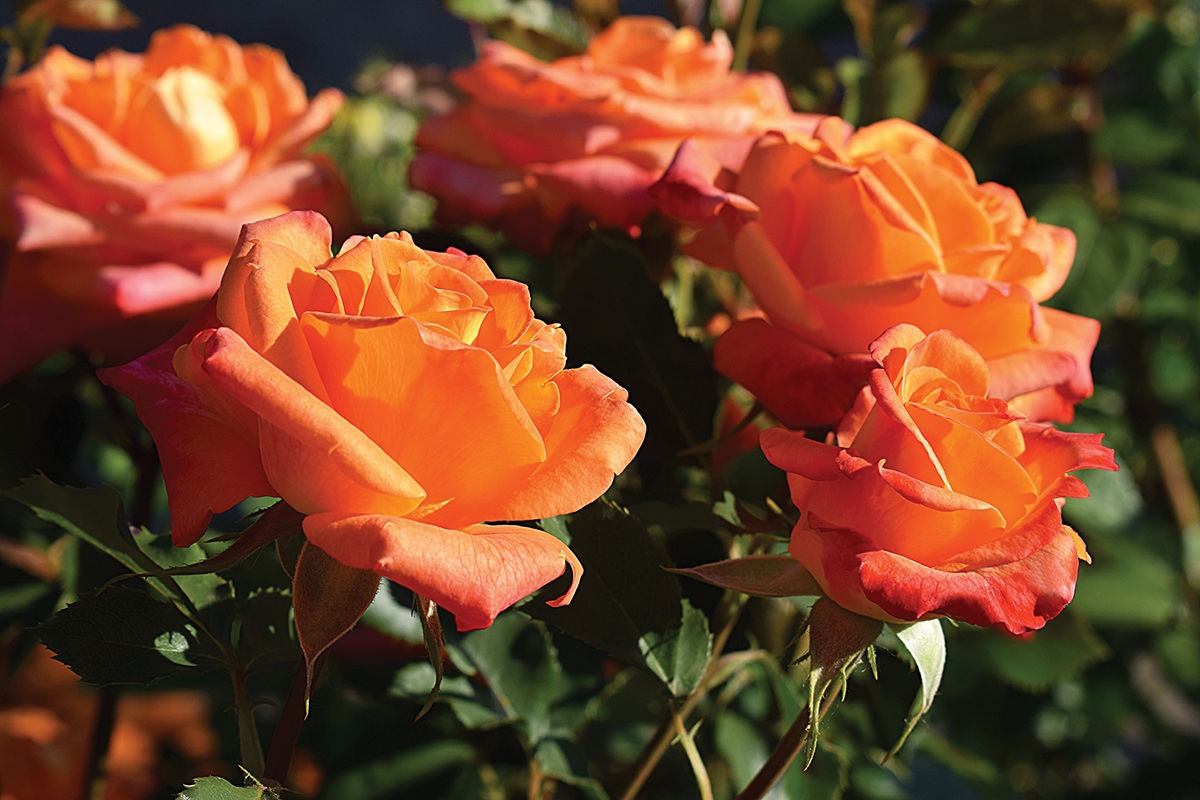Best Roses For Our Region
(Some Of Them Anyhow)

It wasn’t until I moved to North Carolina that I realized how easy it was to grow roses in my native California. Sure, we had diseases and bugs, but where I lived, there were no deer, Japanese beetles, and the dreaded black spot was not as serious a disease. Christina Haney, my fellow nursery professional and soil sister, on the other hand, is familiar with the challenges of growing roses in our climate and region. Neither of us is big into using heavy-hitting chemicals in the garden, and being the stewards of many plants, we don’t want too many prima donnas needing something every five minutes.
Christina knows which varieties make the grade in the performance department. With all of this in mind, here is our definitely-not-exhaustive list of high-performance roses. These were selected because they are very disease resistant and floriferous, and because they grow vigorously. Also, and this is often overlooked, most of these roses age very well, keeping their good looks until their petals fall off. That’s an important feature in our southern heat in which flowers can quickly mature and fade from loveliness.
“AARS Winner” in the description means All America Rose Selection and tells you that the rose has been trialed for two years in gardens around the country and has been proven to have exceptional performance and vigor.
And for those wondering, here’s a breakdown of the following rose classifications:
– Hybrid Tea: Strong stems good for cutting with classically-shaped blooms borne singly on the stems.
– Floribunda: Stiff shrubs, smaller, and bushier than most hybrid teas. Flowers are often smaller than hybrid teas but are produced in large sprays, giving a better floral effect in the garden.
– Grandiflora: Often seem like a cross between hybrid teas and floribundas. Strong stems, good for cutting, with flowers presented in clusters.
High-Performance Roses
– Dream Come True (Grandiflora): Plentiful long-stemmed flowers featuring Chablis-gold centers rimmed in ruby pink and showing great form from start to finish. Tall, upright, and bushy habit. Mild tea fragrance. AARS Winner.
– Elle (Hybrid Tea): Like two roses in one – cherry-pink to apricot with gold at the petal base in the cool of spring and lovely baby pink in summer. A bushy, compact rose with strong, spicy fragrance. AARS Winner.
– Orchid Romance (Floribunda): Ruffled flowers in bubblegum pink with lavender tones at the edges and a hint of coral at the center. Strong citrus fragrance.
– Strike it Rich (Grandiflora): Apricot buds tipped in pink swirl open to abundant deep golden, peachy yellow blooms. Tall and extra vigorous. Strong fragrance of fruit and spice. AARS Winner.
– Tahitian Sunset (Hybrid Tea): A voluptuous, creamy apricot-colored rose with light blushes of pink, and with a strong fruity scent. Christina and I both adore this one. Bountiful and large blooms on upright, bushy plants.
– Easy Does It (Floribunda): Delectable sunset shades of apricot, rose, mango, and peach with scalloped or ruffled petals adding extra thrills. Excellent disease resistance worth noting. Rounded, bushy habit. “One of those where you cut one stem and have a bouquet!” says Christina. AARS Winner.
– Easy Going (Floribunda): Abundant golden peachy yellow flower clusters are loosely ruffled, almost peony-like. Rounded habit, and moderate fruity fragrance.
– Hot Cocoa (Floribunda): Offers intriguing blooms in a novel dark coral to fiery orange with blushes of smoky purple plus excellent disease resistance. One of the parent roses breeders use when they want to breed for disease resistance (which tells you something). AARS Winner.
– Julia Child (Floribunda): Selected by Julia Child herself who loved the butter-gold color of the copious flowers and their sweet licorice-like scent. Handsome, rounded habit. AARS Winner.
– Perfect Moment (Hybrid Tea): Generously-produced, high-centered blooms with a broad red (in spring) or dark ruby pink (in summer) edge and deep gold centers. Upright, compact, medium-sized plant. AARS Winner.
– Tahitian Treasure (Grandiflora): Cup-like blooms that are bright salmon pink. Bushy habit, good flowering density, and rebloom.
– Zephirine Drouhin (Climbing): The only climbing rose to make this list, this beauty boasts deep candy-pink blooms and a sweet raspberry/rose fragrance. She’s tolerant of part-shade, too!
Growing Tips
– Roses like to be fertilized at least once a year or more. They respond happily to fish and kelp emulsions like Neptune’s Harvest and top-dressings of compost.
– Interfere the life cycle of Japanese beetles in your garden by killing the grubs with milky spore treatment and beneficial nematodes (you may have to find these online).
– Plant where roses will receive at least six hours or more sun per day.
– Make sure the soil in the planting bed is nice and loamy with good drainage and plenty of organic matter like compost and/or aged manure mixed in. In our clays, this often means planting up in a berm or raised bed.
– Don’t bury the graft union. That is the knotted, burled area beneath the canes and should be kept above ground.
Tina Mast
Communications director at Homewood Nursery in Raleigh.
- info@homewoodnursery.com
- www.homewoodnursery.com
- 919-847-0117

